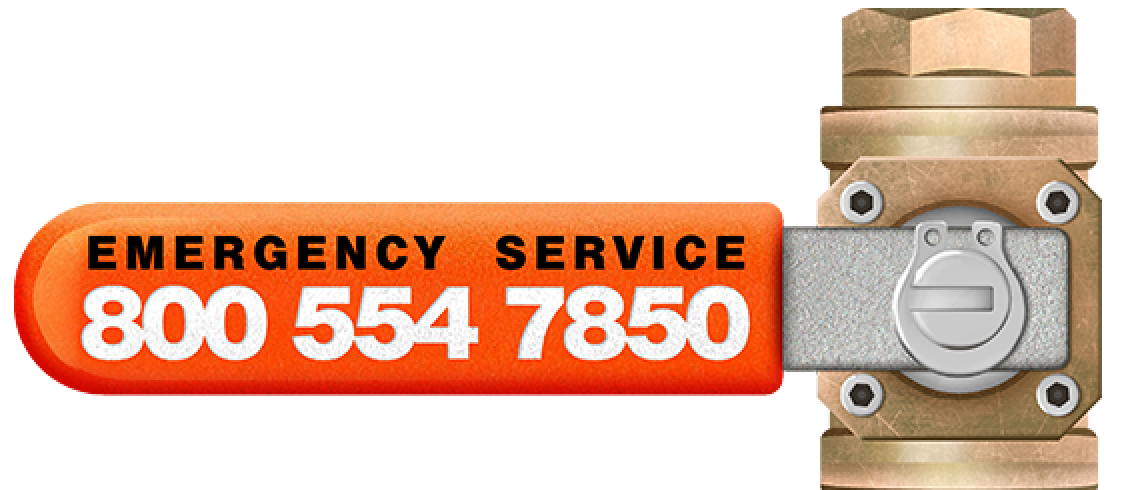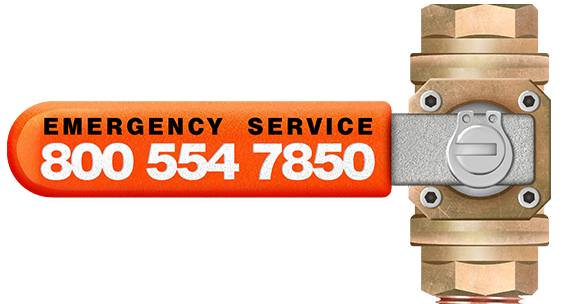Water damage to your home or business can cause extensive problems with dry wall, flooring, cabinetry, and your personal belongings.
With its warm, humid climate and frequently stormy weather, water damage can be a common problem for property owners in Florida.
Water can damage homes in many ways. Drywall easily absorbs water, causing it to swell, bulge, sag, and eventually fall apart. Plus, wet housing materials can create ideal conditions for mold growth, especially in Florida. The most common mold, often called “black mold,” can be ugly and potentially dangerous. Because mold can easily grow with water damage in Florida’s weather conditions, it can be a challenge for homeowners to tackle water damage cleanup on their own.
Where does water damage usually occur?
Water damage is most common in walls, ceilings, and floors. It is especially common near pipes, drains, or appliances near the area. Water damaged drywall can warp and buckle a wall, which can be unsightly. Drywall is also used in ceilings, which will sag and potentially fall if exposed to water damage. Most building materials can grow mold after water damage, but drywall is especially susceptible to mold after it becomes wet.
If wall studs are damaged by rot it can be dangerous. A load bearing wall, by definition, is used to support the structure of the home. If the wall fails, because of water damage, part of the house could collapse.
Damage can be obvious, like a leak in the roof causing discoloration in the ceiling. But it can also be hidden. Leaks under the kitchen sink may go unnoticed for years because you may not look under there very often. Even with a small drip, major damage can happen. Leaks behind a shower enclosure will often not be discovered until someone remodels the bathroom. Sometimes it is only detected when there is obvious damage to ceilings in the floor below or swelling of walls in an adjoining room.
Is water damage covered by insurance?
Water damage is often, but not always, covered by homeowner’s insurance. How the water damage was caused will determine if leaks, spills, or strong storms will be covered. You should check your policy to verify what is covered or speak with your insurance agent.
A water pipe that burst behind a wall may be included in your policy as a covered event. Such a problem might be noticed immediately or might take time for the problem to come to your attention. Either way, burst or leaking pipes can cause a lot of damage. You should read your insurance policy and understand what it covers. Your insurance agent should be able to help you understand what types of things are covered and what is not.
Failure to perform proper maintenance is a common reason claims are denied. On the other hand, damage caused by wind is almost always included. If you endure a major windstorm that damages your roof, which in turn causes your home to get very wet, your chance of having the water damage covered is much higher. This is common with hurricanes and tropical storms and in those situations, water damage repair is often covered up to the amount to replace the home, especially if structural repairs are needed.
On the other hand, if it is a major storm, flood, or other large weather event, the damage may be classified as flooding, requiring separate flood insurance. In Florida, this issue will come up in hurricane season when water coming into your home is caused by runoff, rising streams, or flash flooding. A lot of damage from these storms is consider flooding by insurance companies.
What does water damage cost?
Most water damage repair costs are assessed in rates measured by the square foot of damage. A small corner may not cost much, but water damage that has spread out over floors and walls can add up.
Other factors can also influence cost. For instance, if water damage comes from a sewer leak or other unsanitary source, or if the water mixed with potentially hazardous chemicals, then the repair costs can jump.
In most cases, homeowners with coverage for fungi will have a cap on repairs for mold damage, so expensive mold remediation costs could exceed their insurance coverage limit for that. The good news is that if your insurance covers the cost of mold remediation, it is likely that the reconstruction costs will also be covered and are not limited by the fungi cap. But as always, verify all coverage with your insurance company.
What are the costs of unseen water damage?
Water damage can occur without the homeowner being aware. Slight leaks in roofing, pipes, or hoses can slowly spread water damage to ceilings, walls, and floors. A small leak unseen can become a major problem.
Water damage can even occur after a leak or spill is cleaned up. Leftover moisture in walls, floors and studs will continue to affect the home. When soaked building materials are not properly dried, it weakens the material and can lead to mold growth.
Excess moisture will destroy carpet pads, degrade carpets, and can cause glue used to install hardwood or tile to fail. That’s just flooring. Disintegration of drywall and insulation behind the drywall happens quickly when not dried properly. Again, these effects of water damage can be unseen even after the water has been cleaned up. This is why a certified water damage remediation and repair service is so crucial for any significant leak, spill, or flooding that occurs in or near the home.
If caught early enough you can avoid mold from growing. This is done by extracting any standing water, removing all of the unsalvageable wet material, and then properly and quickly drying the problem area. A certified water mitigation company will have all the equipment, skilled labor, and knowledge to know when the affected area is properly dried.
The financial cost is directly tied to how much is destroyed by the water and replacement costs of the unsalvageable materials.
How is water damage detected?
There are signs that can be evidence of hidden water damage. What those signs are depends upon what is affected.
Blotchy or round stains on the ceiling or walls are the result of water seeping through the drywall. The material gets wet from a leak and since drywall, and the paper it’s covered with, is porous the water seeps through to the other side. When it dries it leaves a watermark.
If the paint or wallpaper is peeling, or the wall is buckling, that can be another sign that unseen water leaks have damaged the wall behind it.
Mold growth is often an indicator of unseen water damage, which shows as a fuzzy discoloration in dark corners and spaces. Unseen water damage can also be sniffed out, as mold and bacteria growth release a musty smell.
Wood floors may also reveal hidden water damage by buckling and warping. Flooring could also come loose if water damage destroys the glue that is attaching it to the subfloor. This could be vinyl, linoleum, tile, or anything that uses an adhesive during installation.
There are tools that professionals like Construemax use to measure for and detect moisture in your home or business.
Why does water damage create mold?
To grow, mold needs moisture or high humidity, warm temperatures, and something to eat. Unfortunately, most building materials act as a food source for mold. Mold can grow 24 to 48 hours after water damage has occurred. Drywall is generally constructed with a type of paper, which makes an ideal food for mold. It can also grow in insulation and carpeting. Walls and ceilings in older buildings can be made from plaster, which can also foster mold growth, but not as consistently as drywall, wood, and other modern common building materials.
Absent moisture, mold will not grow. If there is enough moisture to damage your building materials like wood, carpet, and drywall, then there is definitely enough for mold to grow. In some cases, mold grows because of high humidity in a building, or condensation from a steamy shower, that isn’t properly ventilated, will cause mold to grow even with no other indication of water damage.
How does mold affect people?
Mold isn’t just unsightly, it’s also unhealthy. People can have allergies to mold that can produce reactions that range from uncomfortable to severe. Such reactions can include bronchitis, sinus infections, pneumonia, sore throats, migraines, joint pain and inflammation, digestive problems, exhaustion, and in some cases, even depression. Too much exposure to mold can even lead to lung infections, potentially requiring treatment from a pulmonary physician.
Most common in Florida is Stachybotrys chartarum, often unofficially called “black mold”, which holds the highest potential to do both structural damage and release its spores into the air, endangering those who could inhale them. Businesses that have potentially high exposure to mold include antique shops, construction areas, flower shops, farms, mills, greenhouses, and saunas.
How do you test for mold?
There are home tests that can indicate whether mold is present. However, because mold spreads quickly and can hide in hard-to-find places, it’s best to get testing from a certified water damage restoration service, which will use sensitive mold testing methods to preserve samples and get accurate results for mold detection. Professional restoration services can find mold and water damage that can easily be missed with home testing.
In truth, mold spores are everywhere. You can’t prevent them. But what you can prevent, or if you have them, remove, are mold colonies that are growing. Because of the serious effects on health, it is recommended that if you see any microbial growth, that you contact a certified mold remediation company like Construemax to investigate and if needed, remove the affected materials.
Does my insurance cover mold?
Some policies will cover mold, and some will not. When they do cover mold, they will usually have limits. A common limit is $10,000 for mold remediation, but you can ask about how to increase that limit.
One thing to bear in mind is that the costs of investigating and testing are included in the coverage payout.
Florida is the perfect climate for mold to grow, so having this coverage might be of value to you.
To affirmatively answer the question, you must review your insurance policy. Your agent should be a good resource to be able to answer this and any policy-related question. When you’re asking them about this coverage, you should ask for clarification about which situations would be covered and which would not.
What are the solutions for mold and water damage?
For houses and structures that show evidence of microbial growth (mold) or water damage, hiring a professional water cleanup and restoration team is crucial. Assessing the full extent of water damage can require precise detection, especially for mold, which can linger if the cleanup is not done correctly.
The cleanup crew is going to:
1. Extract any standing water.
2. Remove any materials damaged by water or mold including:
a. Flooring (carpet, hardwood, vinyl, etc.)
b. Drywall (walls and ceilings)
c. Wood (e.g. baseboards, crown molding)
d. Fixtures (lights, ceiling fans, etc.)
e. Personal belongings (furniture, electronics, knick-knacks, etc.)
3. Place commercial-grade drying equipment as appropriate for the circumstances.
4. Monitor the drying process daily until the appropriate moisture levels have been reached.
After standing water is extracted and wet materials removed, it is critical that the area is properly and thoroughly dried. If not, the moisture that remains can continue to do damage to your building materials. More dangerous though, is that the remaining moisture is very likely to lead to mold growth – even if any mold previously detected was removed properly. That introduces health concerns, and the necessity to remove more building materials – contaminated material, from your home. Hopefully, before you’ve spent any money to rebuild, re-carpet, or repaint.
Additionally, any damaged area must be remodeled correctly to prevent any future damage from occurring, which can include inspection of load-bearing walls and foundations. For both safety and appearance, a certified water damage restoration service provides the best results for mold and water damage cleanup.
Contact us for an evaluation or call us at (800) 554-7850 if you suspect you have water damage in the home.







